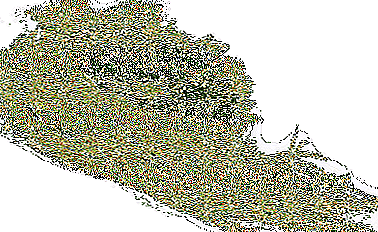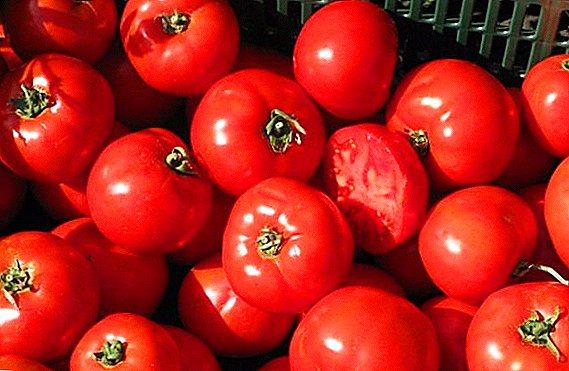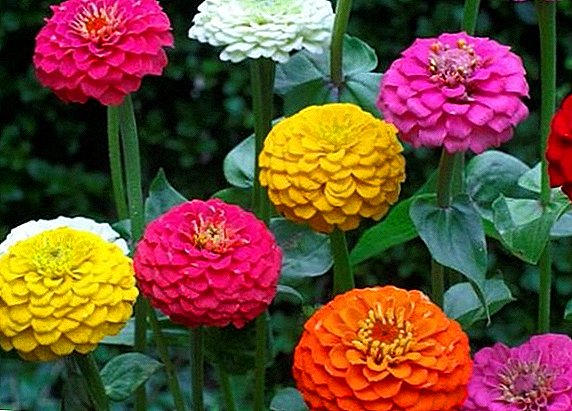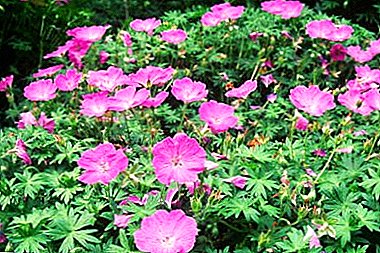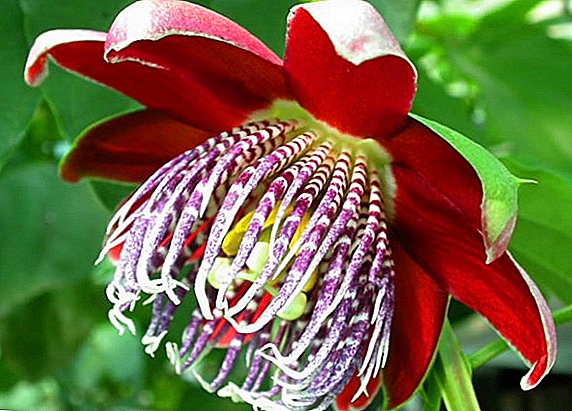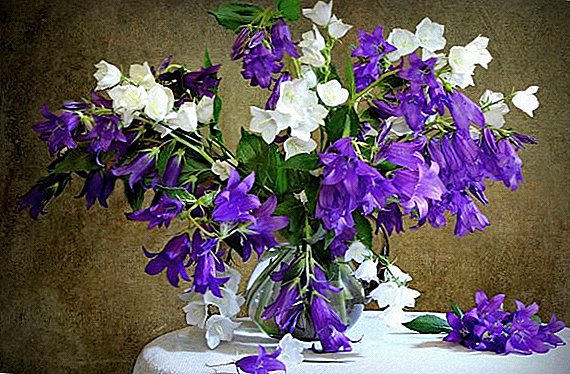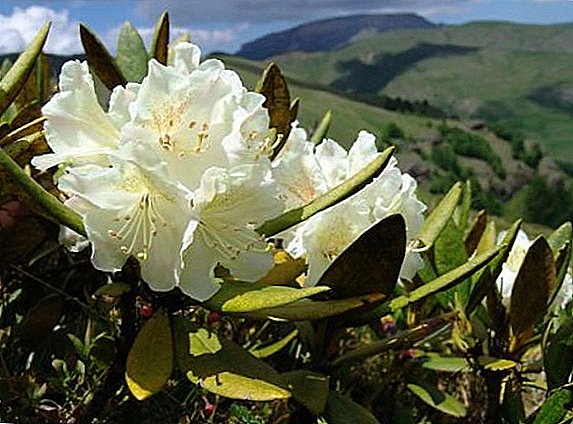 Adams rhododendron began to be used for medicinal purposes a few thousand years ago, oriental healers. No wonder the translation of the name of this plant sounds like "life extending." Now you can find many other names of the plant: white wing, fragrant wild rosemary, Buryat tea, Sagan-Dali, Tibetan wing and others. It is known that this plant is superior to ginseng, golden root and lemongrass in terms of its energy-stimulating effect. The official medicine did not recognize the Adams rhododendron as a medicinal plant, but the healing agents based on it continue to be in great demand among people.
Adams rhododendron began to be used for medicinal purposes a few thousand years ago, oriental healers. No wonder the translation of the name of this plant sounds like "life extending." Now you can find many other names of the plant: white wing, fragrant wild rosemary, Buryat tea, Sagan-Dali, Tibetan wing and others. It is known that this plant is superior to ginseng, golden root and lemongrass in terms of its energy-stimulating effect. The official medicine did not recognize the Adams rhododendron as a medicinal plant, but the healing agents based on it continue to be in great demand among people.
Description
Sagan Dali is an evergreen, branchy, spreading shrub up to 0.5 m in height. The leaves have an oblong, oval shape, pointed at the ends, up to 2 cm in length. From the outside, smooth, painted in dark saturated green color. On the inside they are covered with scales, have a light yellow or orange tint. During the flowering period (summer months), the bushes are covered with beautiful pink buds that exude a delicate pleasant aroma. From flowers in autumn seeds ripen.

Rhododendron grows on stony soils, needs a sufficient amount of moisture. It can be found in the highland forests, on the slopes, the climate of the tundra is acceptable to the plant. Shrub can grow in conditions above 2 thousand meters above sea level. Under the snow cover withstands severe cold. The traditional habitats are the Far East, Tibet, Mongolia, some regions of Russia (including Altai, the Baikal region, Siberia, Sakhalin). In Buryatia, this plant is listed in the Red Book.
Did you know? Tibetan monks considered Sagan-Dali to be one of the 7 plants that surround the Buddha of Beauty and Health. They also endowed him with mystical properties and used for esoteric rituals. For example, the plant was used to search for lost human souls or to travel "on the other side" in order to gain strength and knowledge.
Chemical composition
The composition of the flowers and leaves of the plant include:
- flavonoids;
- tannins;
- glycosides;
- essential oils;
- organic acids in free and bound form;
- tannins;
- resinous substances;
- vitamins C, D;
- terpenes.

Beneficial features
The main value of the plant is in the quality of energy-stimulating and reducing means. Most often it is used in the form of tea. Such a drink restores strength, removes fatigue, tones the body after exhausting loads. Tea helps to restore performance and endurance. It is often used by hunters, climbers, lumberjacks, who are forced to spend a lot of time on hikes, away from urban conditions, with intense physical exertion.
In addition, the plant can affect the body as follows:

- normalizes blood pressure;
- eliminates migraine;
- strengthens blood vessels and heart muscle;
- increases stress resistance, reduces irritability;
- inhibits pathogens;
- normalizes metabolism;
- stimulates brain activity;
- eliminates oxygen starvation at the cellular level;
- accelerates the body's cleansing processes.

In addition, tea from the leaves of the plant is an excellent way to relieve the symptoms of a hangover. Adams rhododendron gently affects the entire body, improves the functioning of all organs and systems. People who have checked the effect of the drink on themselves claim that after taking it there is a surge of strength and vitality, the state of health is normalized, literally every cell is filled with energy, and the mind with clarity.
Normalization of blood pressure also contribute to: cantaloupe melon, champignons, cherry plum, gooseberry, chervil, basil, beet leaves, mint, celandine.
Application
It is possible to apply means on the basis of rhododendron Adams inside and out.

Compresses are effective with wounds, bruises, allergic manifestations, inflammation, as they contribute to the rapid regeneration of tissues. Bandages can also be made for joint pain. Infusion Sagan-Daylya process the gums and the oral cavity, use it for sore throat and other inflammatory processes. In cosmetology The plant is used to rejuvenate the skin, eliminate wrinkles, swelling and bags under the eyes.
It will be useful for girls to learn how to use rosemary, marjoram, coltsfoot, dandelions, marigolds, chamomile, peony, nettles, lovage, enoteru, periwinkle, bird cherry, parsnip, zucchini, walnuts, beeswax for cosmetic purposes.
Inside take tea and infusion in such conditions and diseases:
- in the complex treatment of cancer, after chemotherapy courses;
- with intoxication of a different nature (food, chemical, etc.);
- with impaired metabolism (obesity, hormonal changes, menopause);
- erectile disfunction;
- cognitive impairment (loss of attention, memory, concentration);
- malfunctions of the nervous system (apathy, insomnia, neurosis, etc.);
- cold, flu, infectious diseases;
- diseases of the digestive system (infectious diseases, dysbacteriosis, diarrhea);
- diseases of the heart and blood vessels;
- diseases of the urinary system.

General methods of preparation of infusions:
| Recipe | Ingredients | Preparation and use |
| Infusion, 1st version |
| Raw materials need to fill with water, insist for 10 minutes and strain. Up to 2 such servings can be consumed per day. Morning reception will eliminate the breakdown. If a person is sick, you can prepare a more concentrated brew. |
| Infusion, 2nd version |
| The tool for this recipe should be insisted for at least 2 hours. It should be taken carefully, one glass per day, with the possibility of adverse reactions. |
| Alcohol tincture |
| The tincture is prepared for a week at room temperature, in a dark place. It is useful to take with bacterial infections of the digestive tract, colds, neurosis. Means possesses powerful antiseptic and bactericidal properties. |
Important! Experts advise not to boil the leaves of rhododendron Adams, as long-term heat treatment significantly reduces the healing properties. Use steep boiling water is also not worth it. Optimally - fill the raw material with water, the temperature of which is 80-90 ° C.
Important recommendations on the use of rhododendron-based agents:

- After a month's course of treatment, a 2-week break is required.
- During the period of taking the funds you need to observe the water balance and drink at least 2 liters of liquid.
- If a person is healthy, as a preventive measure, several leaves of Sagan-Dayl can be added to regular tea.
- Take a decoction of rhododendron can not be at bedtime, as you can overexcite the nervous system and get insomnia.
- If adverse reactions occur, discontinue immediately.
Preparation of medical raw materials
From the medical point of view, leaves, flowers and the whole ground part of the plant are considered valuable. However, the leaves of the plant, which is located on the 2-3rd year of life, collected during the flowering period, have the greatest value. It must be harvested in the summer, when Sagan-Daylya is in bloom, which happens at different times in different climatic conditions. Today, the procurement of raw materials is problematic, since in many regions this plant is on the verge of extinction. This situation has led to great popularity and advertising of rhododendron, which caused its chaotic and uncontrolled consumption.

Drying raw materials need a natural method, without direct sunlight. It is best to keep in a glass with a tight lid, in a dry place.
Other plants also have medicinal properties, such as lungwort, laconosa, savory, white silverweed, marsh wild rosemary, peppermint, anise, and cholstyanka.
Contraindications and side effects
In certain conditions and diseases, taking plant-based products is strictly prohibited:

- gestation period (due to the risk of increasing the tone of the uterus);
- lactation period;
- childhood and adolescence (due to the risk of over-stimulation of the nervous system);
- increased blood pressure;
- hyperexcitability;
- acute renal failure;
- necrotic processes in tissues;
- individual intolerance.
Important! In case of overdose, you can get severe disorders of the nervous system: hyperactivity, insomnia, tachycardia, and even hallucinations. Prolonged overdose leads to renal impairment.
With long-term use of sagan-daylya You can note the addiction to the drug and a decrease in its effectiveness. Side effects from taking also include dehydration, dry mouth. Before using products based on rhododendron, you need to get medical advice.
Content at home
At home, Adams rhododendron is grown in pots in the house or on the backyard. However, the plant requires a careful attentive attitude and not every grower gets accustomed.

- Lighting. Light should be in sufficient quantity. If you plant a plant on the street, choose an open area, avoid areas under large razlohimi trees or in the shade of the house.
Familiarize yourself with such winter-hardy rhododendron varieties as: Ledebour and Daurian, as well as learn how to grow rhododendron in Siberia, the Moscow region and the Leningrad Region
- Watering. For irrigation using warm filtered or distilled water, you can also use rainwater. The frequency should be moderate: if you notice that the leaves on the bush have lost elasticity, the plant should be moistened. In the summer, you can use the spray for spraying. In no case can not fill the root system.

- Top dressing. Bushes need fertilizer during the period of active growth. Fertilizers need to be twice a year: in the spring and after flowering. You can use ready-mix for flowering plants according to the dosage indicated on the package. You can also use organic: cow dung.
- Weeding. Weeds need to be removed manually, as the roots of rhododendron are located close to the surface, and they are easy to damage with a tool.
Did you know? There is a beautiful legend about the occurrence of rhododendron Adams. In ancient times, when warriors returned from victorious battles, they stuck spears into the slopes of the Sayan Mountains to transfer their power to the land. Beautiful evergreen bushes with pink flowers grew on the site of the spears, giving people vitality, energy and health.
- Temperature. Able to withstand temperatures down to -32 ° C.
- Pruning. In this procedure, there is no particular need, as the Sagan-Dilea bushes can independently form a beautiful shape. But sometimes there is a need to remove old shoots, rejuvenate the plant. In this case, the procedure is carried out before sap flow, the slices are smeared with garden pitch, and in a month they will form dormant buds, which will remain in this state for about a year.

Caring for a plant during flowering and dormancy will be slightly different:
- The flowering period. Every day you need to moisten the plant from a spray bottle, water it abundantly every other day. You can make feeding on the basis of superphosphates. If the bush is planted in a pot, it must be removed from direct sunlight in a shaded place.
- Leaving after flowering. Removed faded buds, dry leaves. If necessary, you can do pinching to form a bush of the desired shape.

This plant is truly unique, not for nothing that it is valued and used in traditional medicine for several thousand years. In addition to the obvious health benefits, rhododendron bushes Adams will be an exquisite decoration of the garden or home.


